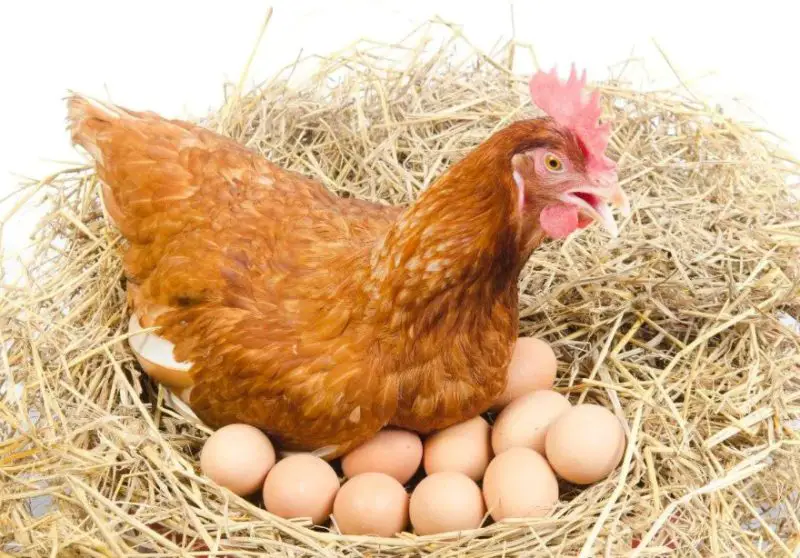Raising backyard chickens is both rewarding and fascinating, especially when you start collecting fresh eggs daily. However, one of the most common questions new chicken keepers ask is: how often do hens lay eggs? The answer depends on various factors — breed, age, environment, diet, and season. Understanding these influences helps you maintain healthy, productive hens and maximize egg production year-round.
This guide explores the natural laying cycle of hens, the science behind egg formation, and the key factors that determine how frequently your chickens lay eggs.
The Natural Egg-Laying Cycle of Hens

A healthy hen can start laying eggs as early as 18 to 20 weeks old, depending on the breed. Once she begins, the typical laying pattern follows a consistent rhythm: about one egg every 24 to 26 hours under ideal conditions. This means that a hen can lay roughly five to six eggs per week, though it varies individually.
The egg production cycle begins when daylight triggers the release of reproductive hormones. The yolk forms in the ovary and travels down the oviduct, where the egg white and shell develop. The entire process takes around 25 hours, which is why hens don’t always lay at the same time each day. Eventually, the time of laying shifts later and later until the hen skips a day, restarting the cycle.
Commercial laying breeds like Leghorns or Golden Comets are genetically selected for high production, often yielding up to 300 eggs per year. On the other hand, heritage breeds and dual-purpose chickens tend to produce fewer eggs but remain hardy and long-lived.
How Often Do Hens Lay Eggs on Average?
On average, a healthy laying hen produces five to seven eggs per week during her peak laying period, which typically lasts from her first year until about age two. However, not all hens follow this pattern perfectly.
-
Young hens (pullets) often begin with irregular cycles before stabilizing into consistent laying.
-
Mature hens usually maintain a steady rate but gradually decline after two years of age.
-
Older hens may lay fewer eggs — perhaps two or three per week — though the eggs are often larger in size.
It’s important to remember that hens don’t lay eggs indefinitely. Even with excellent care, production naturally declines over time due to biological and hormonal changes.
The Role of Breed in Egg Production
Not all hens are created equal when it comes to laying performance. The breed plays a huge role in determining how often a hen lays eggs and how long she continues to produce.
High-Producing Breeds
Some chicken breeds have been specifically bred for egg production efficiency:
-
White Leghorn: Known for laying around 280–320 white eggs per year.
-
Golden Comet: Can produce up to 300 brown eggs annually, with reliable consistency.
-
Isa Brown: A hybrid layer that lays about 300 eggs per year.
Moderate Egg Layers
Heritage and dual-purpose breeds are known for their resilience and hardiness rather than sheer productivity:
-
Rhode Island Red: Around 250–280 brown eggs per year.
-
Plymouth Rock: Roughly 200–250 eggs per year.
-
Sussex: About 250 eggs per year, depending on conditions.
Lower-Producing Breeds
Fancy or ornamental breeds like Silkies or Polish chickens lay significantly fewer eggs — typically around 100–150 per year — but they often make up for it with personality and visual appeal.
Factors That Affect How Often Hens Lay Eggs
Several factors influence a hen’s laying frequency. Managing these properly ensures a steady and healthy egg supply throughout the year.
1. Age
Egg production peaks during the first two years of laying. After that, hens gradually slow down. Most hens reach their highest output between 6 months and 2 years old. Beyond this point, you may notice a decline of about 15–20% per year.
2. Daylight and Season
Hens require at least 14 hours of daylight to maintain consistent laying. During the short winter days, egg production naturally drops or stops completely. This is because reduced daylight suppresses hormone levels that trigger ovulation.
You can extend egg production in winter by using artificial lighting in the coop, ensuring hens get adequate light exposure.
3. Nutrition and Diet
A balanced diet is critical for optimal egg production. Hens require sufficient protein, calcium, and vitamins to maintain both health and egg quality.
-
Use layer feed containing about 16–18% protein and added calcium for shell strength.
-
Offer oyster shells or crushed eggshells as supplements.
-
Avoid overfeeding scratch grains, which can dilute nutrition.
Dehydration or poor-quality feed can quickly reduce or halt laying altogether.
4. Stress Levels
Stress significantly impacts a hen’s reproductive system. Common stressors include sudden temperature changes, predator threats, overcrowding, or frequent coop disruptions. Providing a secure, calm, and clean environment helps prevent drops in production.
5. Health and Parasites
Parasites such as mites or lice drain a hen’s energy, while illnesses like egg binding or respiratory infections interfere with egg formation. Regular health checks, clean bedding, and dust baths help maintain overall wellbeing.
6. Molting Cycle
Molting is the natural process where hens shed old feathers and grow new ones, typically occurring annually in fall. During this time, egg laying usually stops or slows dramatically. The process lasts 6 to 12 weeks, after which laying resumes.
How Long Do Hens Lay Eggs in Their Lifetime?
While a hen may live up to 8–10 years, her most productive years are generally the first three. After that, the number of eggs declines significantly, though many hens continue to lay occasionally well into their later years.
A rough lifetime egg production timeline looks like this:
-
Year 1–2: Peak production (250–300 eggs per year)
-
Year 3–4: Moderate production (150–200 eggs per year)
-
Year 5 and beyond: Sporadic laying or seasonal eggs only
Some keepers choose to keep older hens for companionship or pest control rather than productivity, as their personalities often make them endearing backyard pets.
How Weather and Temperature Affect Egg Laying
Hens are sensitive to extreme temperatures. When it’s too cold, they conserve energy for warmth instead of laying. Conversely, in hot weather, they reduce activity and eat less, which can also slow egg production.
To encourage steady laying year-round:
-
In winter: Add coop insulation and provide supplemental lighting.
-
In summer: Ensure constant access to fresh water and ventilation.
Consistency in environment helps hens feel secure and healthy enough to maintain their laying rhythm.
The Process of Egg Formation Explained
Understanding the egg formation process reveals why hens can’t lay multiple eggs in a single day.
-
Yolk Development: The ovary releases a yolk (ovum), which begins the journey through the reproductive tract.
-
Albumen Formation: As the yolk travels, layers of egg white (albumen) form around it.
-
Membrane and Shell Formation: In the uterus (shell gland), calcium deposits build the hard shell.
-
Laying: After about 25 hours, the fully formed egg is laid, and a new yolk begins developing soon after.
This sequential process ensures that hens lay only one egg per day at most. If a hen lays fewer eggs, it’s usually because one of these steps is delayed or disrupted by external conditions.
Do Hens Need a Rooster to Lay Eggs?
A common misconception is that hens need a rooster to produce eggs. In reality, hens lay eggs without a rooster; however, those eggs will be unfertilized and cannot hatch into chicks.
Roosters are only necessary if you want to breed and hatch your own chicks. In fact, many backyard chicken keepers prefer flocks without roosters for quieter, calmer environments.
Why Your Hen Might Stop Laying Eggs
Even the best layers can suddenly slow down or stop producing eggs. Here are some common reasons:
1. Seasonal Changes
As mentioned, shorter days reduce hormone levels, pausing the laying cycle.
2. Molting Period
Molting diverts protein and energy from egg production toward feather regrowth.
3. Nutritional Deficiencies
Lack of protein, calcium, or vitamins disrupts egg formation and shell quality.
4. Illness or Parasites
Sick hens conserve energy for healing, not reproduction.
5. Broodiness
Some breeds, such as Silkies or Cochins, are prone to broodiness — the instinct to sit on eggs. Broody hens stop laying temporarily until the cycle ends.
How to Encourage Hens to Lay More Eggs
If your hens have slowed down, a few adjustments can help stimulate egg production again:
-
Ensure Proper Lighting: Maintain 14–16 hours of light daily using timers or bulbs during winter.
-
Feed High-Quality Layer Feed: Include adequate protein and calcium sources.
-
Keep Water Clean and Fresh: Dehydration halts egg formation quickly.
-
Minimize Stress: Avoid sudden changes in flock dynamics or loud disturbances.
-
Collect Eggs Frequently: Regular egg collection encourages hens to keep laying in their nesting boxes.
These small management tweaks can often restore consistency within weeks.
How to Track Your Hens’ Egg Production
Keeping a simple record of egg counts helps you monitor flock health and productivity. Note the number of eggs collected daily, and observe any sudden drops, which may indicate health issues, environmental stress, or molting.
Many chicken owners use apps or journals to track trends over time, allowing them to identify productive hens and plan feed adjustments accordingly.
Egg Size and Frequency: Is There a Connection?
Yes — there’s often an inverse relationship between egg size and laying frequency.
-
Young hens lay smaller but more frequent eggs.
-
Older hens lay larger eggs but less often.
As hens mature, the reproductive system expands, producing larger yolks and thicker shells. However, energy demands increase, resulting in fewer total eggs.
When Do Hens Lay During the Day?
Most hens lay eggs in the morning, typically between 7 a.m. and 11 a.m., though this can vary. Because the formation process takes over 24 hours, laying time shifts slightly later each day.
It’s rare for hens to lay at night since they require light to trigger the final steps of ovulation and laying.
Common Myths About Hen Egg Laying
There are several myths that often confuse new chicken owners. Let’s clear them up:
-
Myth: Hens lay eggs every single day without fail.
Fact: While some breeds nearly do, most hens occasionally skip a day due to the natural 25-hour cycle. -
Myth: A rooster increases egg production.
Fact: Roosters don’t affect how often hens lay — they only fertilize eggs. -
Myth: Feeding more grain means more eggs.
Fact: Balanced nutrition, not quantity, matters most for consistent laying.
When to Retire or Replace Older Hens
Eventually, egg output drops enough that it may not be practical to keep older hens for production purposes. Many chicken keepers rotate their flock by introducing new pullets every one or two years.
This ensures a steady supply of eggs while allowing older hens to enjoy retirement as natural pest controllers or garden companions.
Conclusion
So, how often do hens lay eggs?
Under ideal conditions, most hens lay one egg every 24 to 26 hours, averaging five to seven eggs per week. Factors such as breed, age, daylight, diet, and environment determine consistency and longevity of production.
With proper care — balanced nutrition, adequate lighting, and a stress-free coop — your hens can deliver fresh, nutritious eggs almost year-round. Understanding their natural rhythms allows you to manage your flock effectively and enjoy the satisfaction of homegrown eggs for years to come.






